Beneficial
black dung beetle, uncertain dung beetle
Family: Scarabaeidae Subfamily: Scarabaeinae Genus: Copris Species: Copris incertus Say,1835
none available
Total body length 12.0–20.0 mm (0.47–0.78 in). Body shape oval; may be caked in dung. Color shiny black. Head of major male with long, thin, well-developed horn; reduced in minor male; horn truncatetruncate:
appearing cut-off or suddenly shortened
to lacking in female. Pronotumpronotum:
the dorsal surface of the thorax
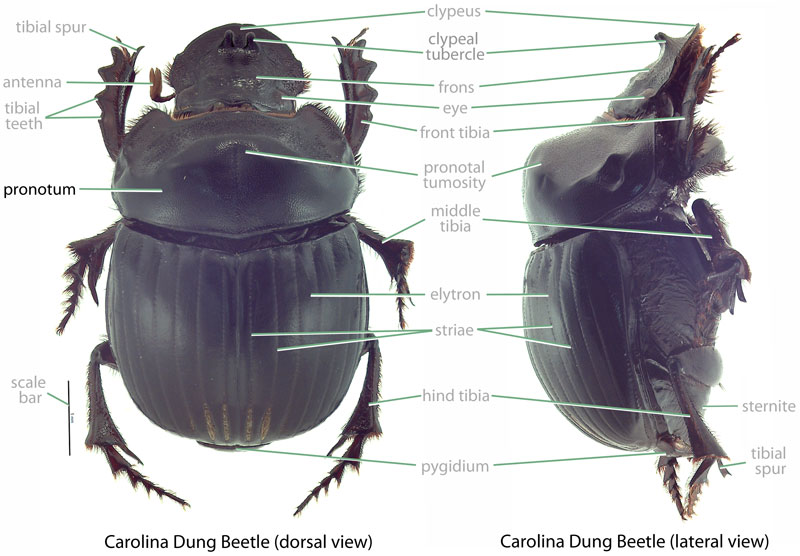 with four horn-like protuberances in major male; protuberances much reduced in minor male and female. ElytraElytra:
with four horn-like protuberances in major male; protuberances much reduced in minor male and female. ElytraElytra:
the hardened and chitinous wing-cover of a beetle that protect and overlie the flight wing
with 9 striae; 8th striastria:
a longitudinal depressed line or furrow, often formed from numerous punctures that extends the length of an elytron
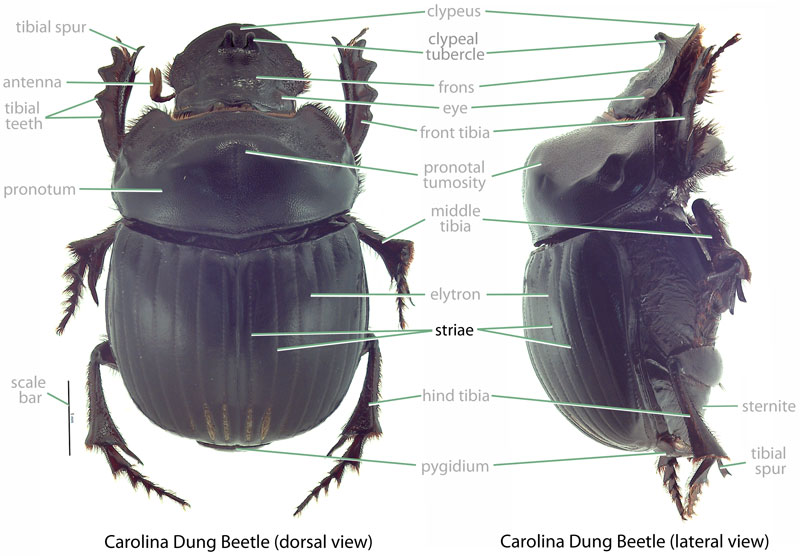 incomplete, never reaching posteriorposterior:
incomplete, never reaching posteriorposterior:
towards the rear end; opposite of anterior
margin of elytraelytra:
the hardened and chitinous wing-cover of a beetle that protect and overlie the flight wing
.
Undescribed. For Copris spp. (Ritcher, 1966Ritcher, 1966:
Ritcher P. 1966. White grubs and their allies: a study of North American scarabaeoid larvae. Oregon State University Monographs, Studies in Entomology 4: 1-219.): Grub C-shaped, hump-backed, cylindrical, whitish. Maxillamaxilla:
set of paired mouthparts located posterior to the mandibles
with galeagalea:
outer branch or lobe of the maxilla
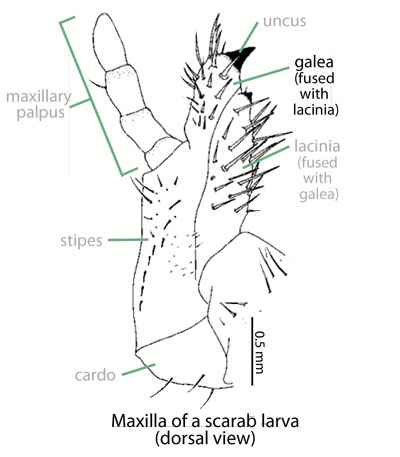 and lacinialacinia:
and lacinialacinia:
inner portion of the maxilla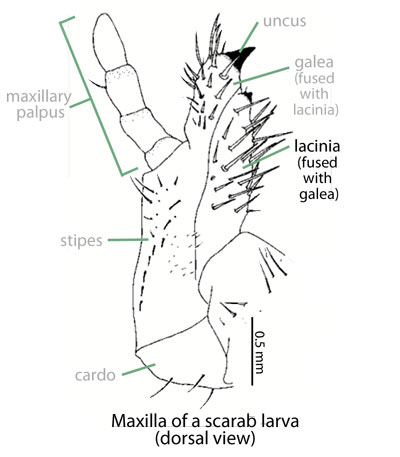 distinctly separated. Epipharynxepipharynx:
distinctly separated. Epipharynxepipharynx:
lobe on the interior surface of the labrum or clypeus
with tormaetormae:
in scarab larvae, sclerotized structures on the ends of the clypeolateral suture extending towards the mesal line
united mesallymesally:
at or near midline of body
, anterioranterior:
the front or forward; opposite of posterior
phoba present. Antennaantenna:
paired sensory organ on head, formed from numerous segments
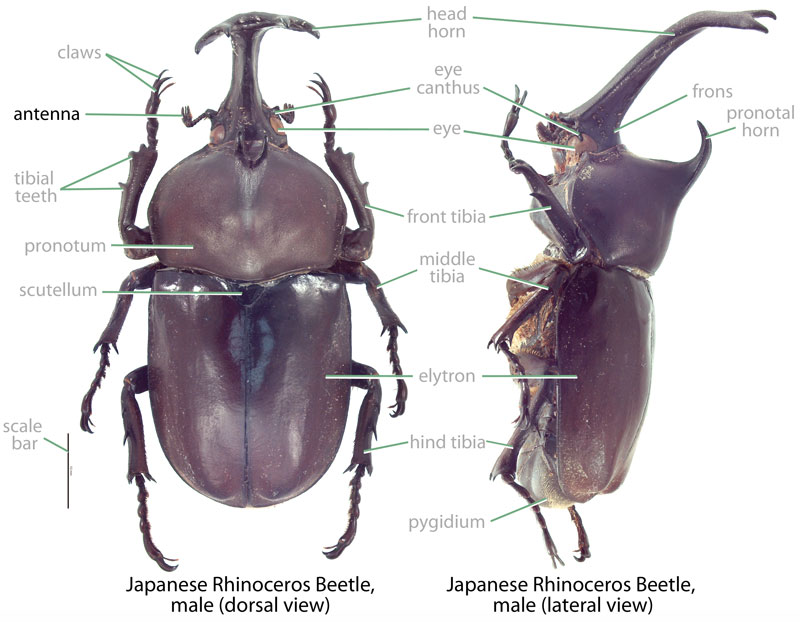 4-segmented, distaldistal:
4-segmented, distaldistal:
situated away from the point of articulation, thus usually furthest from the body
segment much reduced in size. Legs with small, blunt claws each bearing a terminal setaseta:
small, hair-like structure
. Prothoracic shieldprothoracic shield:
the chitinous plate behind the head of larvae
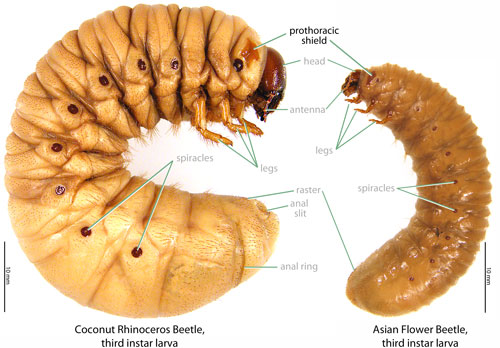 with an anteriorly projecting, angular process on each side. Venter of last abdominal segment with pairedpaired:
with an anteriorly projecting, angular process on each side. Venter of last abdominal segment with pairedpaired:
in relation to bilateral symmetry: occurring on both sides of the body
, median, caudalcaudal:
oriented towards the posterior
lobes or a cleft median lobe.
Mexico, Central and South America. This species is distributed in the New World tropics from Veracruz, Mexico south through Central America and into Colombia and Ecuador (Palestrini et al., 1990Palestrini et al., 1990:
Palestrini C, Pavan G, Zunino M. 1990. Acoustic signals in Copris incertus Say (Coleoptera Scarabaeidae Coprinae). Ethology Ecology amp; Evolution 3: 143-146. DOI: 10.1080/03949370.1991.10721928).
None. This species feeds on dung as both an adult and larvalarva:
the immature form of an insect; in scarabs, also called grub or white grub; preceded by the egg stage, followed by the pupal stage
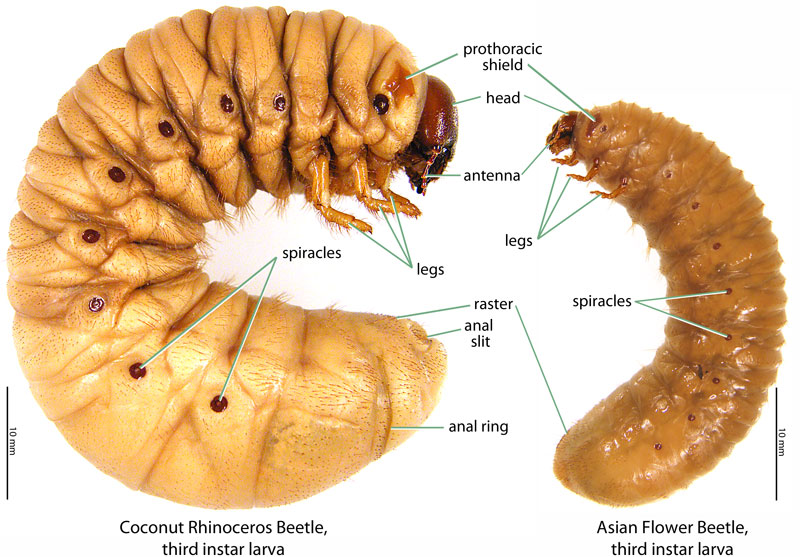 . There are no records of Copris incertus feeding on live plant tissues.
. There are no records of Copris incertus feeding on live plant tissues.
(Halffter et al., 1994Halffter et al., 1994:
Halffter G, Huerta C, Lopez-Portillo J. 1994. Parental care and offspring survival in Copris incertus Say, a sub-social beetle. Animal Behaviour 52: 133-139. full text (accessed 2015)): The female creates a burrow that terminates in a brood chamber under or near a dung pat. With the aid of the male, dung is relocated into the brood chamber, brood balls are created, and the burrow is sealed. On average, five brood balls are created and an egg is laid within each. The larvaelarvae:
the immature form of an insect; in scarabs, also called grub or white grub; preceded by the egg stage, followed by the pupal stage
 grow and feed within the dung balls, and the maternal female remains in the brood chamber and continues to apply dung to the surface of the ball. She also repairs damaged brood balls and drives away parasites. Loss of the maternal female results in greatly increased larval mortality.
grow and feed within the dung balls, and the maternal female remains in the brood chamber and continues to apply dung to the surface of the ball. She also repairs damaged brood balls and drives away parasites. Loss of the maternal female results in greatly increased larval mortality.
None. This species recycles dung and is beneficial for ranching and farming in Hawaii. Primarily being a dung feeder, this species has never been recorded damaging crop or ornamental plants. Additionally, this species is not a threat to native dung beetles because none occur in Hawaii or Guam.
Established. In Hawaii, this species was imported in to combat the horn fly (Haematobia irritans), a biting pest of livestock. It was released in 1922-1923 (Hawaii Division of Forestry, 1923Hawaii Division of Forestry, 1923:
Anonymous. 1923. Report of the entomologist. Hawaii Board of Commissioners of Agriculture and Forestry. Division of Forestry. Honolulu, HI: Hawaiian Gazette Company.) on all the major islands of Hawaii and is now widely established (Nishida, 2002Nishida, 2002:
Nishida G (editor). 2002. Hawaiian terrestrial arthropod checklist, fourth edition. Bishop Museum Technical Report 22: 1-313.).
Recorded, not established. This species was released on Guam in 1953 to help control populations of the horn fly (Haematobia irritans), a biting pest of livestock (Peterson, 1956Peterson, 1956:
Peterson G. 1956. An annotated checklist of parasites and predators introduced into Guam during the years 1950-1955. Proceedings of the Hawaiian Entomological Society 16: 199-202. full text (accessed 2015)). Peterson (1956) stated that it was likely established on the island. Yet, neither Cartwright and Gordon (1971) nor Bourquin (2002) reported it from Guam, and no specimens are present in the University of Guam insect collection (pers. obs. 2015).
In both Hawaii and Guam, this species was intentionally imported.
This scarab is extremely similar to the closely related Copris remotus. These Copris species are separated by examining the elytraelytra:
the hardened and chitinous wing-cover of a beetle that protect and overlie the flight wing
(C. incertus with the outer 8th striastria:
a longitudinal depressed line or furrow, often formed from numerous punctures that extends the length of an elytron
 incomplete, not reaching the posteriorposterior:
incomplete, not reaching the posteriorposterior:
towards the rear end; opposite of anterior
elytral margin versus Copris remotus with the 8th striastria:
a longitudinal depressed line or furrow, often formed from numerous punctures that extends the length of an elytron
 complete, reaching the posteriorposterior:
complete, reaching the posteriorposterior:
towards the rear end; opposite of anterior
elytral margin).
Copris denticornis Gemminger and Harold, Copris exadius Gemminger and Harold, Copris prociduus Say
Report your observation of this beneficial species at our iNaturalist project.